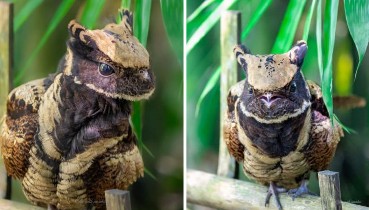

Really old lizards: 180 million year old dinosaur fossils dug up in southern China
 Construction workers building a road in Lufeng County in China's Yunnan Province have unearthed two 180 million year old fossil dinosaurs. One has been identified as Lufengosaurus magnus (pictured), a long-necked herbivore that would have been around 30 feet (9m) when it was alive The fossilised skeletons of two long-necked dinosaurs which were up to 30 feet long have been unearthed by workers building a road in China. The fossils are thought to be the remains of Lufengosaurs magnus and Lufengosaurus huenei – herbivores which roamed the Earth around 180 million years ago. They were discovered just 1,600 feet (500 metres) apart as workers cleared soil and rocks to make way for a new road in Lufeng County in China's Yunnan Province. Palaeontologists say the bones of Lufengosaurus magnus include huge complete hind legs along with much of the back bone and spine. In total the fossil measures around 16 feet (5m) long but experts believe it may have been more than 30 feet (9m) long when alive. Sadly it appears the head may have been eroded away by the weather. The other fossil, of Lufengosaurus huenei, was less well preserved and featured two leg bones along with part of the tail. It is thought to have been smaller than the other creature.
Construction workers building a road in Lufeng County in China's Yunnan Province have unearthed two 180 million year old fossil dinosaurs. One has been identified as Lufengosaurus magnus (pictured), a long-necked herbivore that would have been around 30 feet (9m) when it was alive The fossilised skeletons of two long-necked dinosaurs which were up to 30 feet long have been unearthed by workers building a road in China. The fossils are thought to be the remains of Lufengosaurs magnus and Lufengosaurus huenei – herbivores which roamed the Earth around 180 million years ago. They were discovered just 1,600 feet (500 metres) apart as workers cleared soil and rocks to make way for a new road in Lufeng County in China's Yunnan Province. Palaeontologists say the bones of Lufengosaurus magnus include huge complete hind legs along with much of the back bone and spine. In total the fossil measures around 16 feet (5m) long but experts believe it may have been more than 30 feet (9m) long when alive. Sadly it appears the head may have been eroded away by the weather. The other fossil, of Lufengosaurus huenei, was less well preserved and featured two leg bones along with part of the tail. It is thought to have been smaller than the other creature.
Recommended Videos
 Valley, Amsterdam by MVRDV894 views
Valley, Amsterdam by MVRDV894 views 89 Of The Cutest Cat Pics From Around The Internet1301 views
89 Of The Cutest Cat Pics From Around The Internet1301 views-
Advertisements
 This Fluffy Little Bird Looks Like A Small Dragon125 views
This Fluffy Little Bird Looks Like A Small Dragon125 views Bull Rock Island: Entrance to Underworld211 views
Bull Rock Island: Entrance to Underworld211 views 34 Celebrity Halloween Hot Costume Concept3236 views
34 Celebrity Halloween Hot Costume Concept3236 views First Sunglasses Were Used 2,000 Years Ago By Iniut214 views
First Sunglasses Were Used 2,000 Years Ago By Iniut214 views A rare Piebald Moose was recently photographed by Thomas Morch in eastern Norway. I had no idea they existed.119 views
A rare Piebald Moose was recently photographed by Thomas Morch in eastern Norway. I had no idea they existed.119 views 50 Animals Doing Whatever They Like In A Hilarious And Wholesome Way4027 views
50 Animals Doing Whatever They Like In A Hilarious And Wholesome Way4027 views



